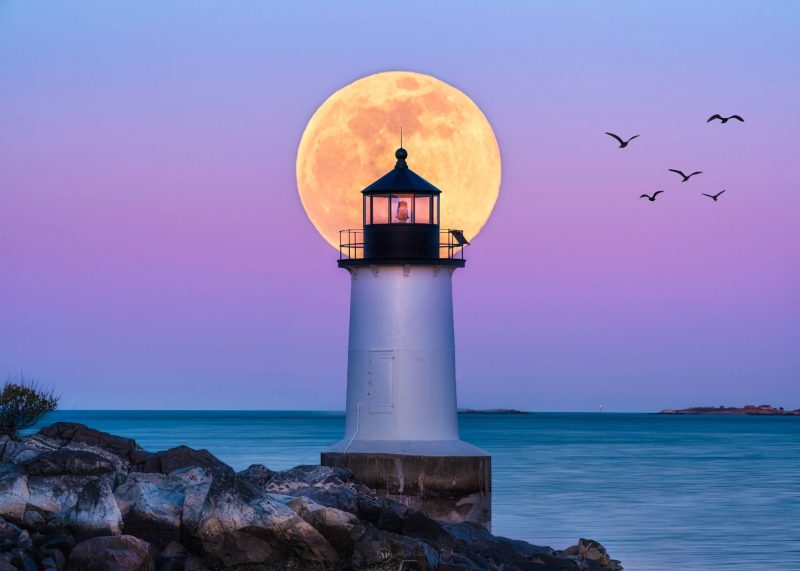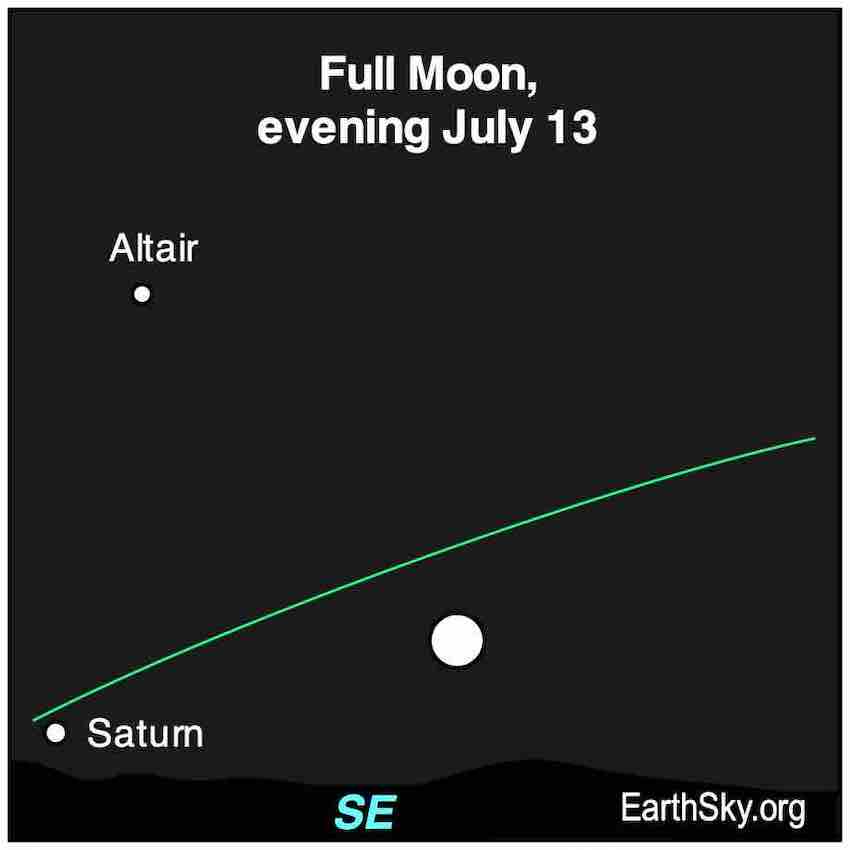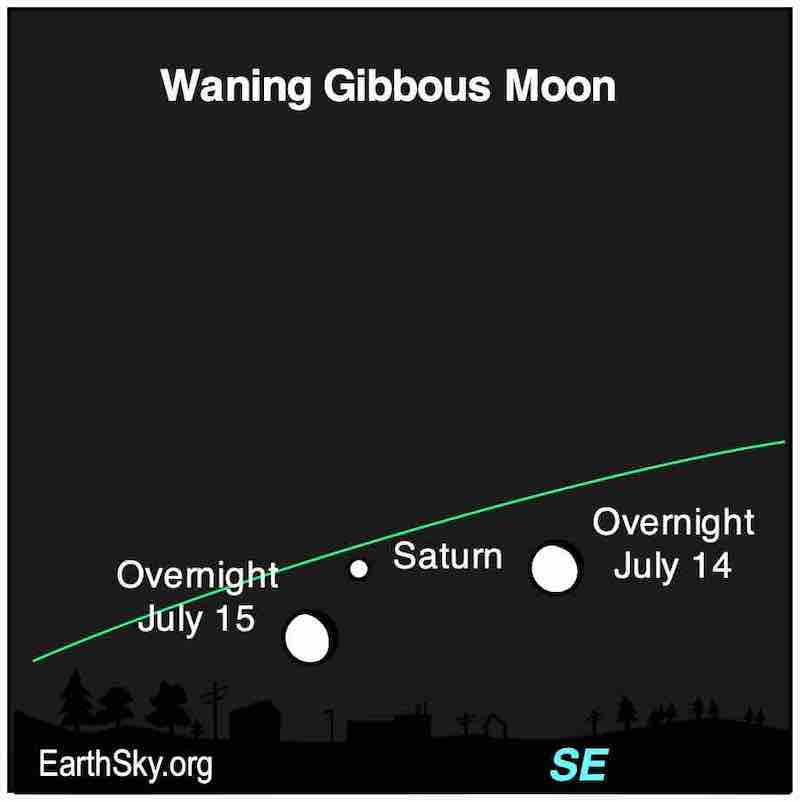
The full moon on July 13 is the closest full supermoon of 2022.
When to watch in 2022: Night of July 13.
Where to look: Look for the bright round moon in the east in the evening, highest in the sky around midnight, and in the west before sunrise.
Crest of the full moon falls at 18:37 UTC on July 13, 2022. That’s 1:37 p.m. CDT on July 13 in central North America.
Note: To the eye, the closest supermoon won’t look any bigger than other full moons. But you might notice that it’s brighter than other full moons.
All full moons rise along the eastern horizon at sunset, and set in the west near sunrise. Full moons are visible all night. At full moon, the sun, Earth, and moon are aligned in space, with Earth in the middle. The moon’s day side – its fully lighted hemisphere – directly faces us. That’s why the moon appears full.
Note that all full moons rise about an hour later each day. And note that the moon will look full and round the day before, and the day after, the crest of its full phase.
So the moon will look full and bright around July 12 to 14. And it’ll be near some notable objects in the night sky:

The full moon of July is the closest for 2022
The closest supermoon of the year will be on July 13, 2022. On that date, the full supermoon will lie 222,089 miles (357,418 km) from Earth. That’s in contrast to its average distance of about 240,000 miles (385,000 km).
Full moon and lunar perigee (when the moon is closest to Earth in its monthly orbit around our planet) fall on the same day in July. The moon’s orbit around Earth is not circular, it’s elliptical. So the moon is sometimes closer to Earth, and sometimes farther away. Astronomers have long called the moon closest to Earth a perigee or perigean moon. But the idea of a full moon that’s closer to Earth than average didn’t catch on until the term supermoon was coined. Read more about supermoons.
An apogee moon is when the moon is farthest from Earth in its orbit. These moons have earned the nickname of micromoons.
The movement of the supermoon in our sky
The full supermoon of July rises in the southeast in the constellation Sagittarius not long after sunset. About an hour after moonrise, you can catch Saturn appearing above the horizon in the east-southeast. The ringed planet is in Capricornus, trailing the moon.
Because the moon moves its own diameter eastward in an hour, by the time the supermoon sets on the morning of July 14, the moon will have crossed the border of Sagittarius into Capricornus with Saturn. As you might be able to predict from this motion of the moon, it will pass by the ringed planet soon: from July 14 – 15. By then the moon will be a waning gibbous moon but still more than 90% lit.

Supermoons affect the tides
The closest supermoon of the year has the potential to bring exceptionally high tides to your area, too, if you live along a coast … especially if a strong weather front, with high winds, moves into your area around the time of the full moon. The moon is only 8 to 12% closer to Earth at perigee, yet the moon’s influence on the tides is 30 to 49% greater than at apogee. Full supermoon tides typically follow the actual full moon by a day or so.
A curious feature of tides is that tidal friction transfers angular momentum from Earth to the moon. This effect lengthens our day and increases the moon’s orbit. The lengthening of the day is small: just 1 second every 40,000 years. The effect on the moon is also small. It recedes from Earth about 1.5 inches (3.8 cm) a year. But it means that in about a billion years, the moon will be too far away to completely block out the sun, resulting in the end of total solar eclipses.
Bottom line: The closest supermoon of the year will be on July 13, 2022. On this date, the moon will lie 222,089 miles (357,418 km) from Earth.
The post Closest supermoon of 2022 on July 13 first appeared on EarthSky.
0 Commentaires